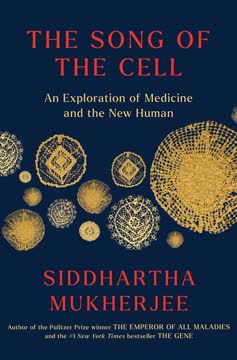Key Takeaways
1. The Covid-19 virus: A stealthy and formidable enemy
The Covid-19 virus represents the greatest public health crisis of the last hundred years.
Viral structure and behavior. SARS-CoV-2, the virus causing Covid-19, is a tiny but complex organism. Its core is a single strand of RNA, protected by a fatty outer membrane studded with spike proteins. These spikes allow the virus to bind to ACE2 enzymes on human cells, facilitating entry and infection.
Stealth and rapid spread. The virus's ability to spread undetected is a key factor in its success:
- Infected individuals can be asymptomatic or have mild symptoms
- Viral shedding occurs early in infection, often before symptoms appear
- The virus can survive on surfaces for hours or days
Immune system evasion. Covid-19 employs several tactics to avoid detection:
- Silencing cellular distress signals
- Covering spike proteins with sugars (glycans) to disguise them
- Rapid multiplication before the immune system can respond
2. Tracing the virus's global spread and initial responses
The Chinese authorities put Wuhan into lockdown. They closed the airport and shut down bus and train services. They shut off a city of 11 million people. It was an extraordinary public health experiment; something like this had never been attempted before. But it was too late. The virus had already escaped.
Early timeline. The virus's global spread unfolded rapidly:
- December 31, 2019: Chinese authorities report cases of "pneumonia of unknown cause" in Wuhan
- January 11, 2020: China shares the virus's genetic sequence
- January 20, 2020: Human-to-human transmission confirmed
- January 30, 2020: WHO declares a "public health emergency of international concern"
Initial responses. Countries varied in their approaches:
- China: Imposed strict lockdowns and widespread testing
- South Korea and Taiwan: Aggressive testing and contact tracing
- US and UK: Initially downplayed the threat, later implemented travel restrictions and lockdowns
- Many countries were slow to react, allowing the virus to spread undetected
Missed opportunities. Several factors contributed to the virus's unchecked spread:
- Underestimation of the threat
- Insufficient testing capacity
- Lack of coordinated global response
- Continued international travel
3. Understanding transmission, symptoms, and risk factors
If you are young and healthy, there is a chance that the innate part of your immune system will be able to keep the virus under control until the big guns arrive. You may get a mild cough, a bit of a fever, or nothing at all.
Transmission methods. Covid-19 spreads primarily through:
- Respiratory droplets from coughs and sneezes
- Close personal contact
- Contaminated surfaces (less common)
Symptom progression. The disease typically unfolds in stages:
- Days 1-2: Virus multiplies in throat, no symptoms
- Day 3: Virus shedding begins, still often asymptomatic
- Day 5: Symptoms may appear (fever, cough, fatigue)
- Days 9-11: Severe cases may develop pneumonia or ARDS
Risk factors. Certain groups are more vulnerable to severe illness:
- Older adults (especially 65+)
- People with underlying health conditions (diabetes, heart disease, obesity)
- Men (higher mortality rate than women)
- Individuals with compromised immune systems
Asymptomatic spread. A significant portion of infections (up to 40%) may be asymptomatic, contributing to the virus's rapid spread and making containment challenging.
4. Bolstering your immune system against Covid-19
Being told "not to stress" is actually quite annoying. For most people stress is just a part of everyday life. In the short term it can help get you out of bed and get on with doing things that you don't want to do. But if it's chronic it will take a heavy toll on your immune system.
Lifestyle modifications. Strengthen your immune system through:
- Weight management: Reduce visceral fat to improve immune function
- Diet: Adopt a Mediterranean-style diet rich in fruits, vegetables, and healthy fats
- Sleep: Prioritize 7-9 hours of quality sleep per night
- Exercise: Engage in regular moderate physical activity
- Stress reduction: Practice mindfulness, meditation, or deep breathing exercises
Nutritional support. Key nutrients for immune health:
- Vitamin D: Sunlight exposure or supplementation
- Probiotics: Fermented foods or supplements to support gut health
- Antioxidants: Colorful fruits and vegetables
Habits to avoid. Minimize immune system stressors:
- Excessive alcohol consumption
- Smoking or vaping
- Chronic stress
- Sedentary lifestyle
5. The race for a vaccine: Challenges and promising approaches
With the right degree of vision and drive it really could happen. Having a vaccine to use this winter would have a major impact on reducing what we expect to be a second wave of infections. It would also help us get back on our feet again.
Vaccine development approaches. Multiple strategies are being pursued:
- Traditional: Using weakened or inactivated virus
- RNA-based: Instructing cells to produce viral proteins
- Vector-based: Using modified harmless viruses to deliver genetic instructions
Leading contenders. Several promising vaccine candidates:
- Oxford University/AstraZeneca: Vector-based vaccine showing strong immune response
- Moderna: RNA-based vaccine in advanced clinical trials
- Pfizer/BioNTech: Another RNA-based approach with promising results
Challenges. Vaccine development faces several hurdles:
- Ensuring safety and efficacy
- Scaling up production
- Equitable global distribution
- Potential for virus mutation
Accelerated timeline. Normal vaccine development takes 5-10 years, but Covid-19 vaccines are being fast-tracked through:
- Parallel clinical trial phases
- Increased funding and resources
- Regulatory flexibility
6. Lessons from history: Smallpox eradication and vaccine development
Jenner never tried to make money from his discovery. Tired of constant ridicule, he retired from public life and became a country doctor. He built a hut in his garden, which he called the "Temple of Vaccinia" and from that hut he vaccinated poor people for free.
Smallpox history. Smallpox, a devastating disease, killed millions over centuries:
- Jumped from animals to humans thousands of years ago
- Caused widespread death and disfigurement
- Particularly deadly in the Americas upon European contact
Edward Jenner's breakthrough. The first vaccine was developed against smallpox:
- Observed that cowpox infection provided protection against smallpox
- Conducted the first "human challenge study" in 1796
- Term "vaccination" derives from "vacca" (Latin for cow)
Global eradication. Smallpox was declared eradicated in 1980:
- WHO launched an ambitious eradication program in 1966
- Used "ring vaccination" strategy to contain outbreaks
- Last naturally occurring case in 1977
Lessons for Covid-19. The smallpox story offers insights:
- Importance of global cooperation
- Potential for targeted vaccination strategies
- Long-term commitment required for disease eradication
7. Practical measures to protect yourself and others
The best way of protecting yourself is by washing your hands, often and thoroughly, with soap, particularly after you have been out in public.
Personal hygiene. Essential preventive measures:
- Frequent handwashing with soap for at least 20 seconds
- Use of alcohol-based hand sanitizers when soap is unavailable
- Avoid touching face, especially eyes, nose, and mouth
Social distancing. Reduce transmission risk:
- Maintain at least 6 feet (2 meters) distance from others
- Avoid large gatherings, especially indoors
- Work from home when possible
Mask wearing. Proper use of face coverings:
- Wear masks in public spaces, especially indoors
- Ensure mask covers both nose and mouth
- Wash reusable masks regularly
Environmental considerations. Minimize risk in various settings:
- Improve ventilation in indoor spaces
- Clean and disinfect frequently touched surfaces
- Prefer outdoor activities when meeting others
Stay informed. Keep up with current guidelines:
- Follow recommendations from health authorities
- Be aware of local infection rates and restrictions
- Understand symptoms and when to seek medical care
Last updated:
Review Summary
COVID-19 receives mixed reviews, with an average rating of 3.89. Some readers find it informative and well-explained, praising its accessible content on the virus and pandemic. Others criticize it for being premature, potentially outdated, and including too much self-promotion of the author's diet books. The book covers topics such as virus transmission, immune response, and vaccine development. Readers appreciate the historical context and lifestyle advice, but some feel the information is already widely known. Overall, opinions vary on the book's relevance and depth of content.
Similar Books
Download PDF
Download EPUB
.epub digital book format is ideal for reading ebooks on phones, tablets, and e-readers.
















